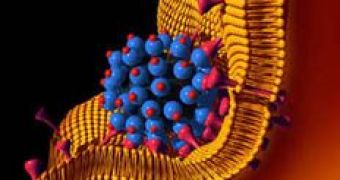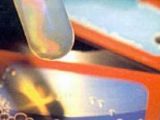Nano Today launches a dedicated forum for debate on the effects of nanoparticles on human health. Andrew Maynard of the Woodrow Wilson International Center for Scholars calls for a strategic approach to research on potential risks to ensure the development of safe, publicly acceptable nanotechnology products.
Nanotechnology has been touted as the next technology revolution, transforming everything from communications to medicine, water decontamination to homeland security. But scientific progress has been accompanied by fears over unknown consequences of nanotechnology, with one pressure group even calling for a moratorium on all research until more is known. More specific concerns have been voiced by various parties - including the UK Royal Society and Royal Academy of Engineering - about exposure to manufactured nano-sized particles and the possible harmful effects on human health. The future success of nanotechnology will depend on rational and informed work to understand and minimize these potential adverse effects on health and the environment.
"We need to understand both how harmful a substance is, and how much of it can get into the body, if risk is to be understood and managed," says Maynard. Nanoparticles may have greater reactivity, and so toxicity, than larger sized particles. Because of their size, nanoparticles may also invade some of the body's natural defense systems and accumulate in some tissues. But currently, there is little information on the impact of engineered nanoparticles, and what there is can be contradictory.
Maynard begins by saying that not all nanomaterials are likely to be of concern. He sets out from the vast range of available nanoscale materials those that are likely to be relevant to human health. Maynard then reviews what has been established about the behavior of nanomaterials in the body, considering how nanoparticles may get into the body via the lungs, skin, or digestive system as well as possible toxic effects.
But risks from even harmful nanoparticles only arise if there has been exposure to a high enough dose. The current picture of how nanomaterials might be released and dispersed in the environment is described in the article, as well as ways of measuring exposure.
"Not only is it necessary to consider the potential for engineered nanomaterials to be released in a form that leads to exposure, chemical and structural transformations between the point of release and the point of exposure will also likely determine health impact," explains Maynard.
Maynard suggests how potential risks should be managed alongside public awareness of the issues. By providing a context for considering these risks, he is able to suggest directions for further work to ensure the development of safe nanotechnology-based products.
Nano means billionth, so a nanometer is a billionth of a meter. That is clearly very small: on this scale, a human hair is enormous at 100 000 nm across and even red blood cells are thousands of nanometers in diameter. But a DNA molecule, for example, is 2 nm wide. At this level, the properties of materials (electronic, optical, magnetic, etc.) can differ significantly from those at a larger scale, leading to many new possible applications. Nanotechnology is the design and production of materials, devices, and systems at this fundamental, molecular scale.

 14 DAY TRIAL //
14 DAY TRIAL // 
